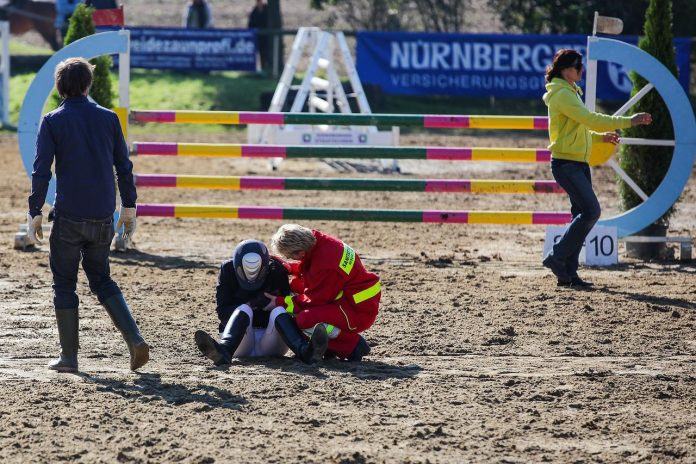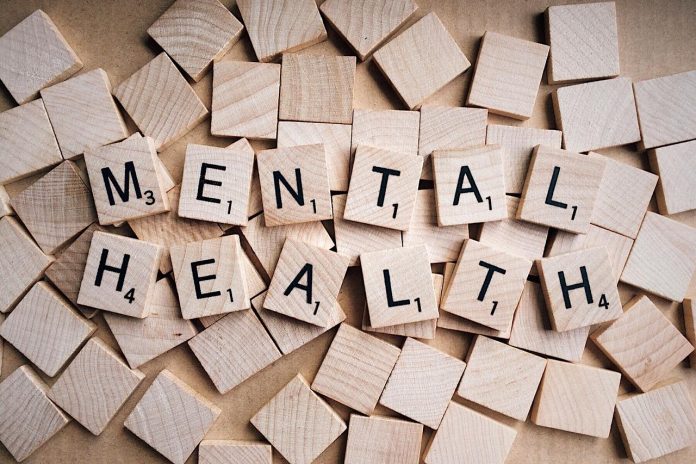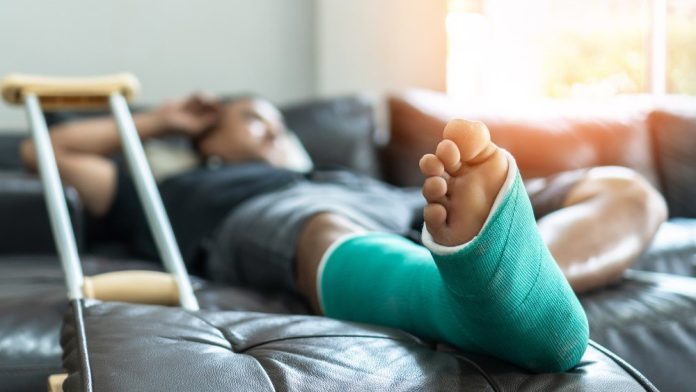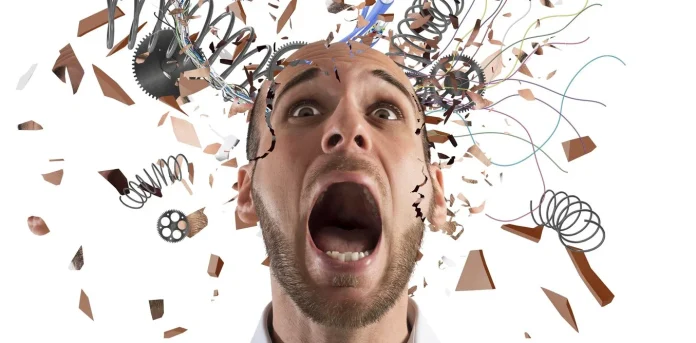
Table of Contents
Unfortunately, injuries are common in sports. You may even go so far as to state that injuries are part and parcel of any serious sporting endeavors.
For any athlete, being injured sucks. There is a feeling of being betrayed by your body, which has carried you throughout your sporting life. This can easily mess with your head. A sports injury has other consequences such as losing the support of your fans, a loss of income and loss of focus and direction.
All these losses can trigger mental health issues.
How often does a professional athlete get injured?
Many professional sports persons rarely go through a complete season without getting injured, let alone their entire career. These can range from minor scrapes and bruises to career and life-threatening injuries.
Athletes competing and playing at higher levels push themselves to extreme limits and this can wear out their tissues, leading to injuries.
Most athletes have solid, resilient bodies and great mental strength that is necessary when competing at higher levels. However, when sidelined due to an injury, it can affect their self-identity, self-esteem, social and emotional well-being.
Every athlete copes with an injury differently. While surgical and rehabilitative technology to aid physical recovery has greatly advanced, mental injuries are not as clear-cut and need a slightly different approach.
Understanding Athletes Mental Health

For any athlete, harnessing their brainpower means increasing overall functioning. The mental state has an effect on physical well-being and motivation. When a sports injury occurs, this enhanced mental state is even more needed for recovery.
Professional athletes invest their emotions, focus, and strength in the social contact and activities revolving around their sport. An injury can disconnect or entirely remove this contact. This can cause psychological disturbances, stress and can even lead to long-term mental health issues.
The physiological distress due to a sports injury has three elements, and they include;
- Traumatic and shock stress;
- Grief and loss;
- Transitional stress (Adjustment disorder).
Traumatic and Shock Stress
After a frightening life situation or severe injury, we go into shock. Shock has physical and psychological effects.
The physical signs of shock include a rapid heart rate, low blood pressure, weakness, difficulties breathing, and nausea. Psychological symptoms include emotional detachment, confusion, disorientation, muteness, unresponsiveness, and memory loss.
When a sports person goes into shock after an injury, they may also experience excessive alertness, fatigue, general body pains and aches, energy swings, and disturbed sleep. They may also experience psychological effects like poor concentration, dreams, and memories of their past events, memory confusion or loss, loss of interest, anxiety, and social withdrawal, among others.
If left untreated, these traumatic shock symptoms may increase the possibility of developing depression and long-term mental difficulties.
Grief and Loss

According to Elisabeth Kübler-Ross, there are five stages of loss and grief. Similarly, when faced with a serious injury, athletes will experience loss and grief.
These losses include financial stability, long-term or temporary sporting identity. For an athlete to move on, they need to undergo the various stages of loss and grief. These include;
Isolation and Denial: Denial protects us from shock and emotional breakdown when faced with uncertainty and fears. We tend to withdraw and resist any acknowledgment of what is happening. Denial blocks us from facing reality and leads to isolation.
Anger: Once the denial phases out, we become angry with ourselves and others. It’s a way of deflecting out our emotional pain. Athletes may become angry with themselves, teammates, coaches or even the entire sport. It is irrational but it’s also human.
Bargaining: After the reality of the sport injury kicks in, an athlete may feel helpless and try to salvage the situation by trying even the most impossible and impractical ideas to reverse the situation. At this stage, the athletes are prone to snake oil salesmen, products and unverified therapies, in the hope of miracle cures.
Depression: When the bargaining fails to succeed, sadness and uncertainty kicks in. This depression stage, if not properly managed, can lead to a total mental breakdown.
Acceptance: After letting go of the past, this stage enables an athlete to embrace and accept their injury. Acceptance isn’t a happy shift. However, unlike the depression stage, an athlete can make peace with the current circumstances and start to forge a way forward. The way forward may include a comeback to professional competition or moving on to other pursuits.
Transitional Stress and Adjustment Disorder

Transitional stress occurs when we have to adjust to unexpected changes. These changes cause discomfort, challenges and test our surviving skills. Unexpected changes can include parental separations, divorce, accidents, or injuries.
For a sports person, adapting to your current injured state creates transitional stress. This is quite normal. However, change is hard and transitional stress can lead to more significant issues or adjustment disorders.
When not appropriately handled, the above psychological effects may lead to slow recovery, performance slumps, re-injury, and long-term mental difficulties.
Tips for Recovering Mentally After a Sports Injury
1. Understand your Injury
For an athlete, a severe injury is not simply body damage and recovery through physical rehabilitation. It involves an interaction between the body and the brain that determines feelings, thinking, physical and psychological behaviors, and performance recovery.
As such, understanding the injury allows the athlete to plan, which gives them back a measure of control.
- Become positively involved in learning the details of the injury, even the smallest one. This will help to normalize the condition and adjust your daily routine accordingly. The daily routine may include minimal practice, healthy eating, and social networking.
- Conduct and research how their injury affects your psychological and physical responses by reading books, talking to therapists, doctors, and other people, including other athletes.
In short, an athlete should equip themselves with physical and psychological knowledge of their injury. This forms the main foundation of developing coping strategies that allow you to connect the recovering dots.
2. Embrace Resilience

Resilience marks the difference between overcoming challenging situations successfully or not.
After an injury, an athlete needs to empower themselves with skills to achieve resilience. These skills enable you to manage the roller coasters of emotions and thoughts.
With resilience, you can recalibrate your thinking.
The key to becoming resilient is allowing your mind to be prepared to deal with negative emotions and thoughts that will eventually come, that can harm motivation, confidence, physical recovery, and self-belief.
Strategies to Build Resilience
- Cognitive behavior therapy (CBT) – Cognitive-behavioural therapy acts as a psychotherapeutic treatment that enables people to learn different ways of identifying their disturbing and destructive thought patterns.
- Target relaxation tactics: Some relaxation techniques like guided imagery, help in reducing muscle tension and stress. This helps an athlete to ride through the injury wave and struggle a little less.
- Body scan meditation: This technique involves bringing awareness to every part of your body while in a meditative state. It allows you to reconnect with your physical self and notice any body sensations and pains. The goal of body scan meditation is to allow you to learn your injury and therefore, manage it better.
Adapting the above strategies trains your body and mind to become aware and open-minded of your injury sensory experiences and, eventually, more accepting. With practice and time, your body becomes resilient by building its ability to focus on the present and complete healing.
3. Set Realistic Goals
Naturally, athletes are goal setters. Even after an injury, an athlete will want to set goals for the healing progress. However, injuries have many variables that are out of your control and you may therefore fall short of your goals. This can cause a lot of disappointment which can further slow down your recovery.
After an injury, adopting achievable, definite, measurable, related, and time-bound goals is important. This will keep you motivated and focused on recovery and rebuilding your sporting career.
However, the most important part of your goal setting should be flexibility. Be aware that that you may not achieve the goals you have set out and be flexible enough to reset them.
4. Adapt Visualization

Most athletes adopt the power of visualization to improve their performance. The same concept should be applied during an injury.
Visualize yourself healthy and training with the same energy as before.
For example, for a basketball player with a hand injury, picture yourself healed and using the same hand to throw in the balls and having them sink in the basket one after another. For a swimmer, feel your body gliding through the water and focus on how you feel in the pool.
Visualization means simply training your mind to form mental images that you can put into action to achieve success.
How to Visualize Healing
- Find a quiet and comfortable space.
- Calm your mind. You can achieve this by closing your eyes and taking deep breaths to relax.
- Begin to visualize your healed body, going back to practicing, performing and winning. Think of everything in a clear and detailed manner. Ensure you add your emotions and feelings to your visualization to achieve interconnected results.
- Repeat the practice daily or more as you prefer for 5-10 minutes.
Remember, after visualization, keep fosters a positive attitude and helps you to keep the faith.
Visualization benefits to an injured athlete include:
Boosting resilience and confidence: This enables you to embrace the recovery journey and supports mental health.
Calming nerves: Best in eliminating negative thoughts
Desensitize the situation: This allows you to focus on healing instead of thinking about the past and the injury.
Improved reaction time: Since the brain controls your mind’s visual imagery muscles, visualization may help connect the actual muscles, making your mind and body better coordinated. This will improve your healing time and potentially, ensure a faster comeback.
Bottom Line
Injuries are the price that every athlete pays in their quest to excel in a particular sport. By adopting the above mental tips combined with proper medical support, knowledge, and patience, you can overcome injuries and succeed. Success may mean making a comeback into your sport or transitioning successfully to other pursuits. Either way, mentally recovering after a sports injury is vital for every athlete. Visit here If you need legal advice when facing a serious injury.
















